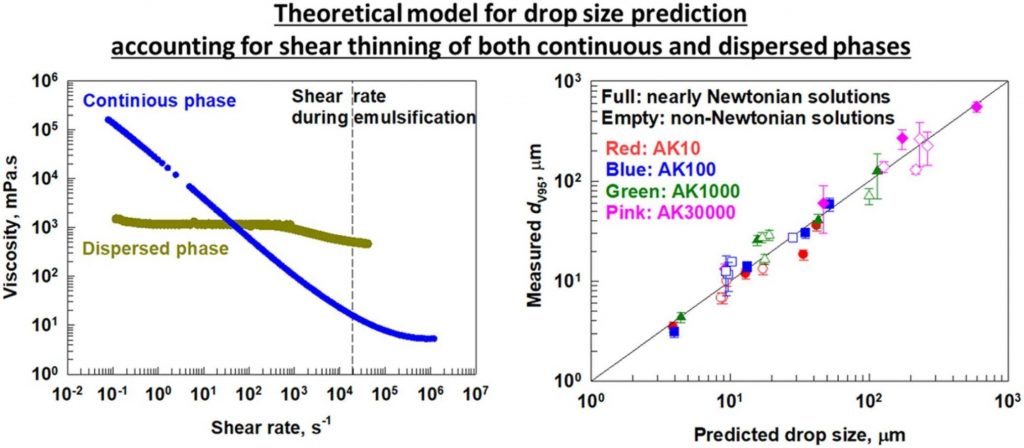Emulsification in nearly Newtonian and non-Newtonian media of wormlike micelles

Emulsification experiments with four silicone oils, having viscosities ranging from 0.01 to 30 Pa.s, were conducted in two types of media: nearly Newtonian polyvinyl alcohol (PVA) solutions and non-Newtonian mixtures induced by worm-like micelles in solutions of sodium laureth sulfate and cocoamidopropyl betaine (BS) with NaCl. The increased viscosity of BS solutions upon the addition of NaCl did not significantly affect the drop size in the formed emulsions. In contrast, the increased viscosity of solutions with higher PVA concentrations significantly reduced the drop sizes for all silicone oils. A theoretical expression predicting the maximum drop size in both types of media (nearly Newtonian and non-Newtonian) was derived and validated against experimental data. The expression accounts for shear-thinning behavior in both the aqueous and oil phases. Interfacial stress dominates the breakage of less viscous oils, while viscous stress inside the breaking drop plays a leading role for more viscous oils. The formation of emulsions with similar sizes in non-Newtonian solutions of BS with different NaCl concentrations was explained by their strongly shear-thinning behavior, which leads to nearly similar viscosity at high shear rates, despite their zero-shear viscosities differing by more than two orders of magnitude.

